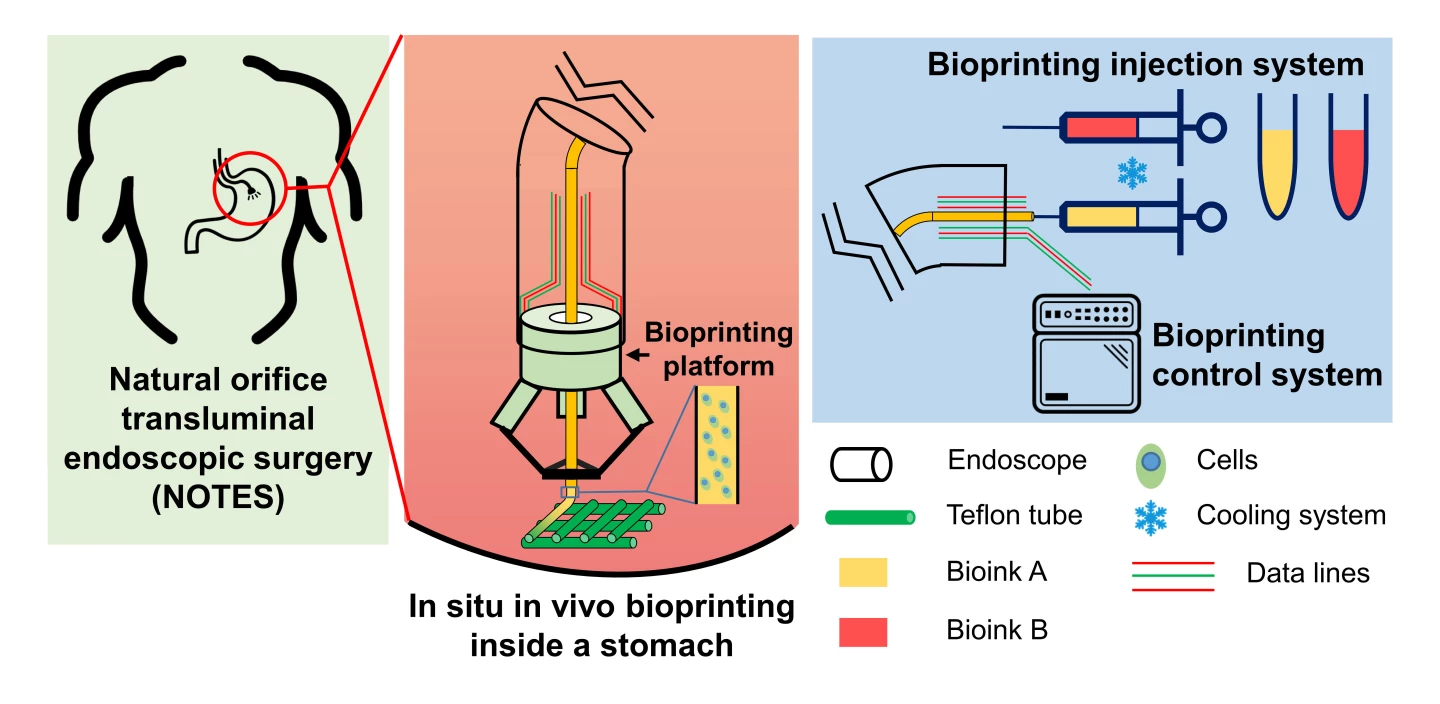Open wounds on the stomach wall can be serious if left untreated, sometimes requiring surgery. In the not-too-distant future, though, it's possible that a small robot could bioprint new cells onto such injuries … from inside the body.
While we have already heard about bioprinters designed to help heal wounds, the devices are usually fairly large, and thus are limited to use on external injuries. Prof. Tao Xu, working at China's Tsinghua University, recently set out to change that.
Collaborating with PhD student Wenxiang Zhao, he developed a prototype snake-like robot that could be endoscopically inserted into a patient's stomach. It's a delta robot, meaning that its head consists of a rigid base surrounded by three independently moving arms. It folds down to be extra-skinny while being inserted, then opens up upon reaching the wound site.
Once it's done so, its arms guide a tube that extrudes two types of hydrogel bio-ink – one of those contains human gastric epithelial cells, while the other contains human gastric smooth muscle cells. These are deposited in two separate layers, forming a scaffold that covers the wound.

"We tested the system in two ways," says Zhao. "First, with a biological model of a human stomach and an endoscope, to mimic the insertion and printing operation elements of the process. Second, we carried out a bioprinting test in a cell culture dish to test how effective the device was at bioprinting viable cells and repairing wounds […] A 10-day cell culture showed that printed cells remained at a high viability and a steady proliferation, which indicated good biological function of the cells in printed tissue scaffolds."
Xu adds that more work still needs to be done, however, such as further miniaturizing the robot's printing platform, and refining the bio-inks. In fact, we recently heard about an unrelated bio-ink that's designed specifically for use inside the body.
The research is described in a paper that was recently published in the journal Biofabrication.
Source: IOP Publishing





